Pyramid Pose: How-to, Benefits, Tips And Precautions Explained
Get to know more about Pyramid Pose, a yoga practice that stretches and strengthens while ensuring stability. Enhance your physical alignment and flexibility.
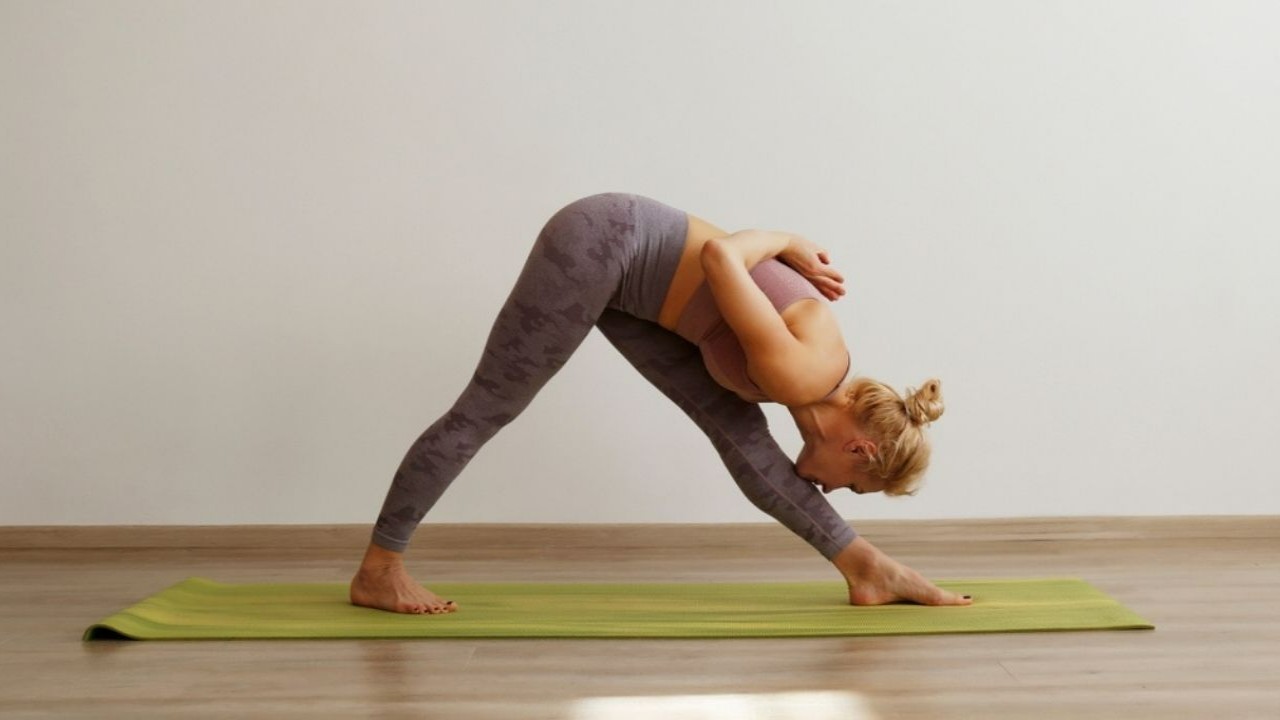
Known in Sanskrit as Parsvottanasana, where 'parsva' means side, 'ut' means intense, 'tan' means to stretch, and 'asana' means pose, Pyramid Pose embodies an intense side stretch that engages the entire body. This yoga pose focuses on a deep forward fold, mindfully stretching the hip muscles and hamstrings while ensuring the spine retains its natural grace. Precision ensures the knees don't hyperextend and the back remains unrounded.
Whether you are an athlete, a working professional, or a tech-focused teen, this intense side stretch pose works for everyone. Sharing more about this pose, our contributor Bayu Prihandito, who is a Life Coach, and RYT 200 Yoga Teacher, says, “Pyramid Pose challenges and improves balance by engaging your core muscles and stabilizing the lower body, allowing you to develop stronger body awareness and coordination.”
Through the practice of Parsvottanasana, a transformative journey unfolds. The upper body extends the spine and opens the shoulders, perfectly counterbalanced by the grounded stability of your base.
Embracing this duality, practitioners find an alignment that transcends the physical, venturing into the energetic. This embodiment of opposites enhances the physical alignment and elevates the entire practice, making Parsvottanasana an essential element in the yoga routine.
9 Benefits of Pyramid Pose for the Body And Mind
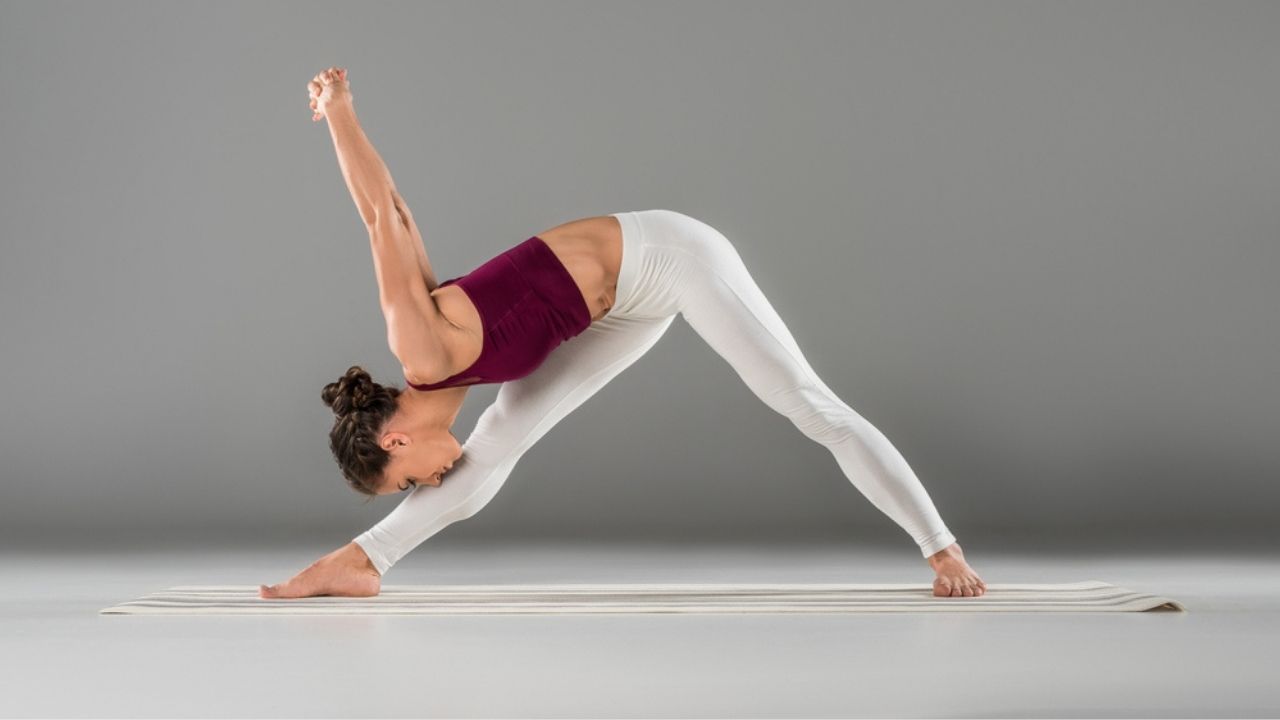
Among various asanas, the Pyramid Pose, or Parsvottanasana, holds a distinctive place for its multifaceted benefits. Let's explore the advantages of practicing this challenging forward bend in detail.
1. May Strengthen Muscle Groups
Parsvottanasana offers an opportunity to stretch and strengthen various muscle groups. Engaging the hamstrings, calf, quadriceps, hips, and gluteus, it provides a firm foundation for balance (1). The hands, joined in Namaskar Mudra, contribute to lengthening the spine, readying the body for deeper backbends.
2. May Enhance Flexibility
The Pyramid Pose is a gateway to greater flexibility (2). Beginners may opt for a gentler version that aids in enhancing the range of motion. This modification helps develop the flexibility required for the full expression of the pose.
3. May Improve Breathing Rhythm
Despite the chest constriction in Parsvottanasana, the Reverse Namaste Hands encourage deep breathing. This inverted pose facilitates optimal blood flow and prepares the upper body for intense forward bends like Parsvottanasana Arms Extended (3).
4. May Increase Concentration
This asana demands undivided attention and synchronicity of breath and movement (4). The need for balance engages the core and requires a heightened state of mindfulness, fostering concentration.
5. May Improve Posture
Parsvottanasana assists in correcting alignment and posture. By focusing on the spine, shoulders, and hips, practitioners gradually correct any imbalances and improve their stance, especially beneficial for those with sedentary lifestyles.
6. May Stimulate Blood Circulation
The pose stimulates blood circulation towards the head and fosters relaxation by toning the spine. The practice releases stored tension, rejuvenating both body and mind (3).
7. May Help Improve Digestive Health
The forward bend in Parsvottanasana massages the internal organs, improving digestion and helping with chronic indigestion (5).
8. May Relieve Arthritis Symptoms
Anecdotal evidence suggests that this asana offers relief from arthritis symptoms, digestive issues, and thyroid imbalances. It can be particularly therapeutic for neck, shoulder, and wrist ailments.
9. May Tone Muscles and Alleviate Pain
Parsvottanasana finds its place in vinyasa and power yoga sequences for its ability to tone the thighs and abdominal area (6). It proves beneficial for runners, athletes, and even women during menstruation (6).
Parsvottanasana is a versatile asana, bestowing physical and mental benefits. From enhancing flexibility to improving concentration, the Pyramid Pose is a must for every yogi.
How to Do Pyramid Pose: A Detailed Guide
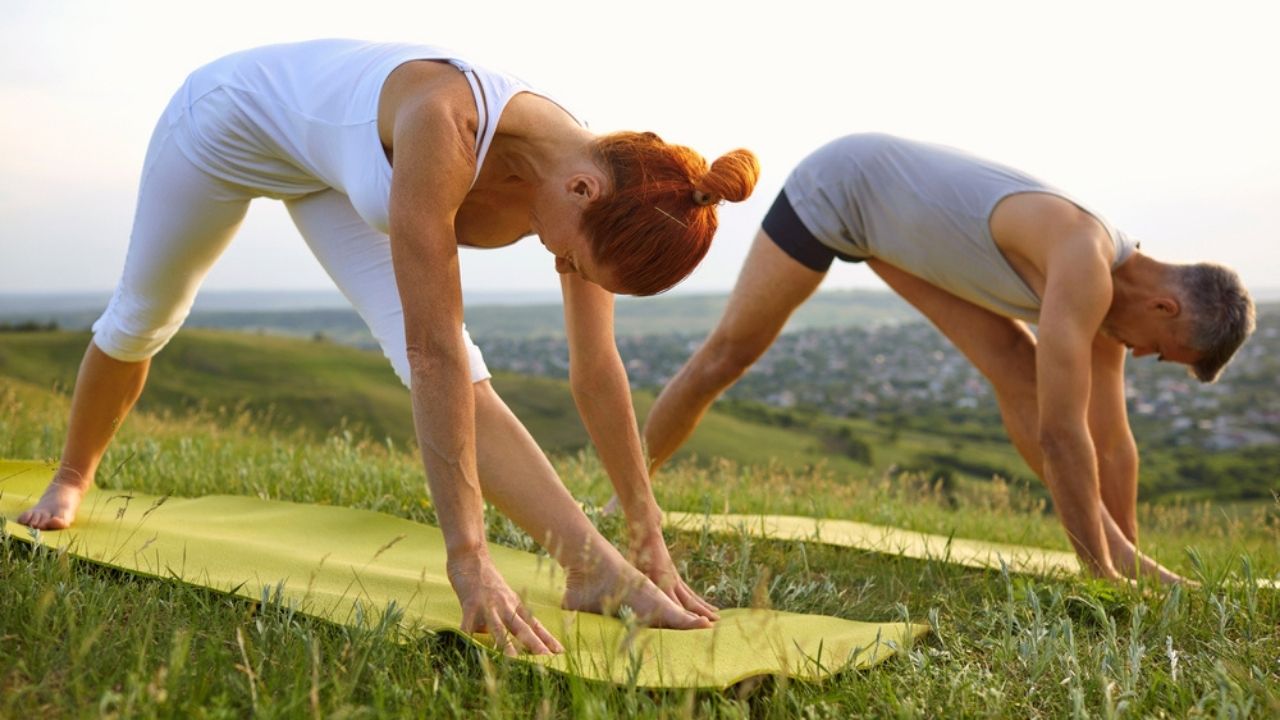
Pyramid Pose, or Parsvottanasana, is a standing yoga pose that combines the elements of a forward bend and a balancing posture. This guide will walk you through how to perform this pose accurately.
Step-by-Step Guide to Pyramid Pose
- Initiate in Tadasana (Mountain Pose). Stand at the top of the mat with feet together, spine elongated, and arms resting by your sides.
- Position your hands on your hips, ensuring they are squared and facing forward.
- Step your right foot back and align your heel to heel.
- Your back foot should be positioned at a 30- to 45-degree angle for stability.
- Press down with your proper big toe mound and simultaneously draw your left hip back toward your right heel, ensuring your hips face forward and your waist remains elongated.
- Inhale and spread your arms out to the sides.
- Exhale, rotate your arms inwards.
- Now bend the elbows, and put your palms together behind your back.
- In case you find it challenging, hands can be placed alongside your feet, on blocks, or resting on your shin.
- Inhale deeply to lengthen your spine and engage your quadriceps, preparing for bending forward.
- Exhale properly.
- Hinge at your hips and fold forward toward your front thigh.
- Keep your sternum reaching away from your navel and your collar bones broad to ensure openness and length throughout your torso.
- Breathe out deeply.
- Bend from your hip area and lean over your front leg.
- Stretch your chest forward from your belly and keep your shoulders wide apart to stay open and long in your upper body.
- Softly lower your forehead close to your knee.
- Pull your upper arm bones back and lift them up to keep your posture in check.
- Breathe in and push down through your legs to stand up straight again.
- Let go of your arms and step your feet back together, coming back to a standing position.
Follow these steps, and you can ensure correct alignment and execution of the Pyramid Pose. With consistent practice, you can master this pose, enhancing stability and balance in your yoga routine.
Beginners Tips to Do Pyramid Pose
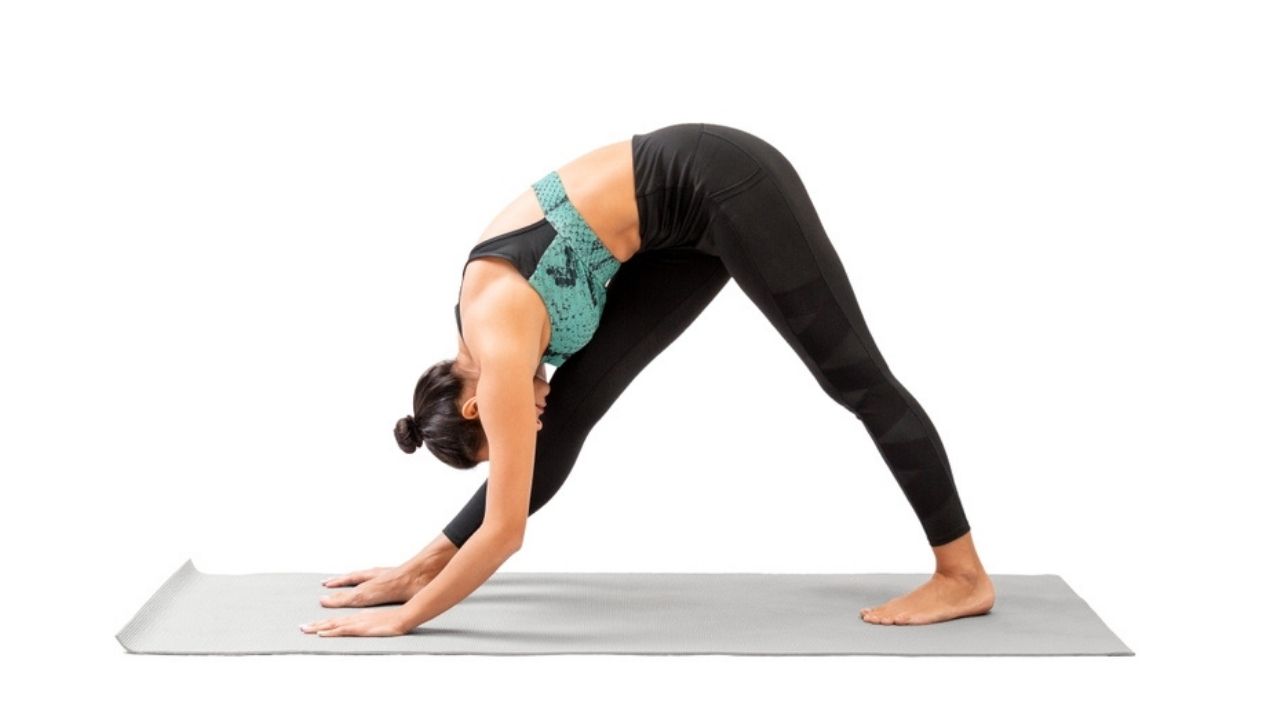
Here are some insightful tips to help novices find balance and stability in their initial attempts.
- Beginners may mistakenly adopt a stance too wide, similar to that of the Crescent Lunge. A closer stance allows for a comfortable forward hinge from the hips while maintaining balance.
- Stability in Pyramid Pose originates from the feet. Pressing down into all four corners of the feet can foster stability and uphold the integrity of the pose.
By being mindful of energy distribution, a novice can effectively learn this asana.
Variations And Modifications of Pyramid Pose
The Pyramid Pose can be tailored to accommodate varying levels of flexibility and balance. Below are two variations that ensure practitioners can enjoy the benefits of the pose while considering their comfort and skill level.
Pyramid Pose with Blocks
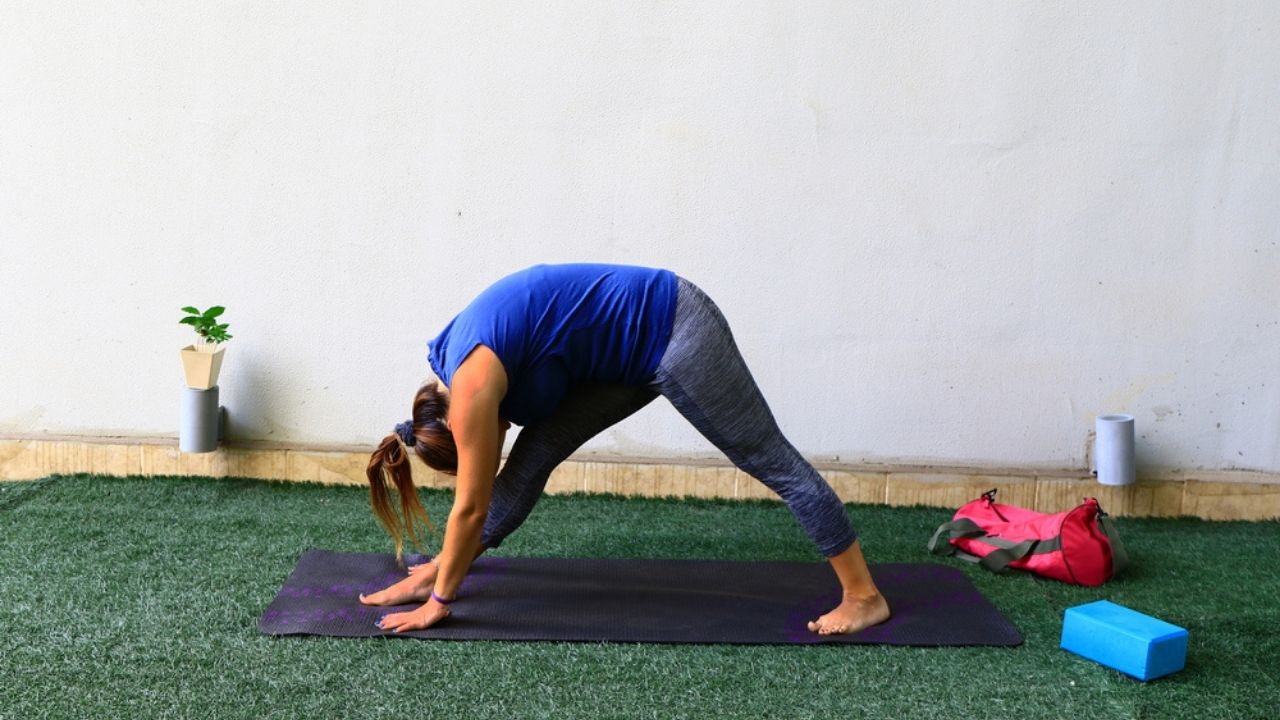
For those who are finding Pyramid Pose a bit difficult to perform, it is better to try the posture with blocks for support.
Steps:
- Begin in the standard Pyramid Pose stance.
- If reaching the floor causes back rounding, place blocks under the hands.
- Adjust the height of the blocks as needed to maintain the pose's integrity.
Pyramid Pose with Wall support
As a practitioner, you can execute the Pyramid Pose with your left foot against a wall, utilizing it as a stabilizing touch point.
Steps:
- Stand with your back to a wall.
- Step forward with one foot.
- Fold forward into the pose, using the wall to assist in finding balance.
Adding these variations can enhance the practice of Pyramid Pose and you can experience its benefits while respecting your current capabilities.
Safety And Precaution While Performing Pyramid Pose
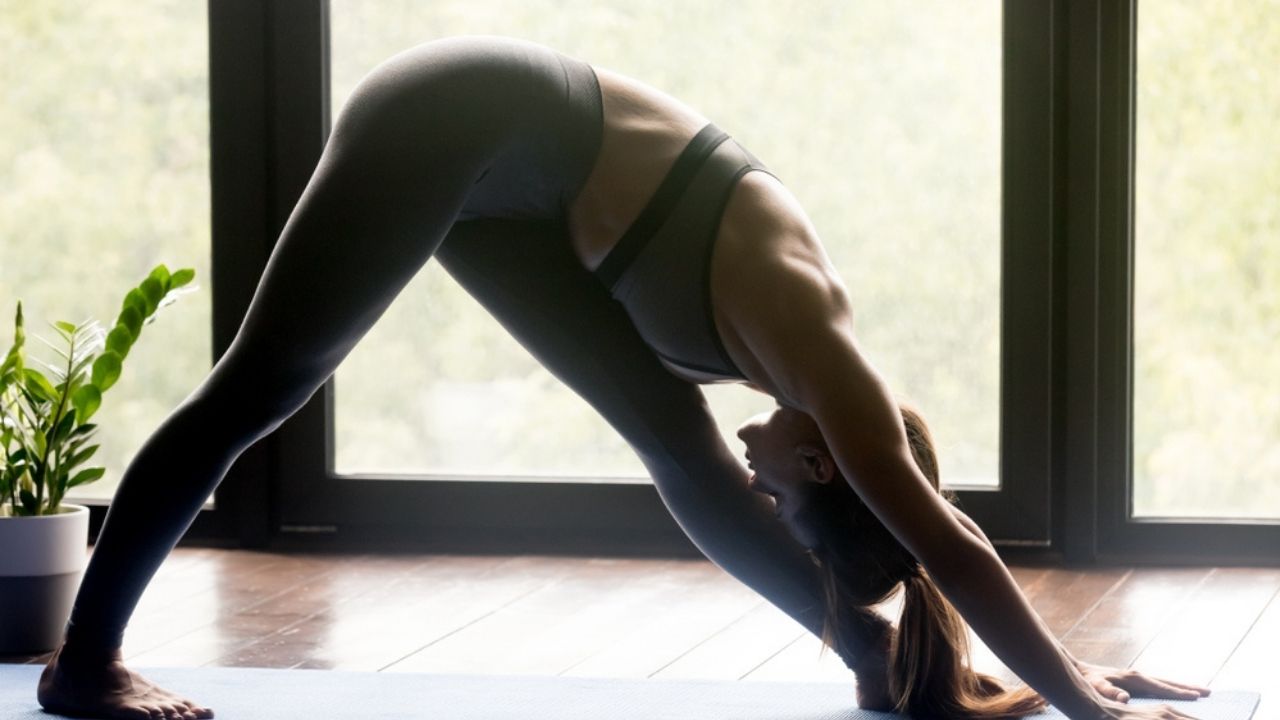
Ensuring a safe and beneficial practice of the Pyramid Yoga Pose (Parsvottanasana) involves paying close attention to the details of the pose. Below are precautions and safety tips to avoid common errors and to maintain the integrity of the practice.
Precautions and Safety Tips
- A narrow stance can lead to difficulties in squaring the hips and maintaining balance.
- Keep your feet aligned as if on parallel train tracks, slightly widening the stance if needed for stability in a pyramid fold.
- Grasping the shins with the hands can compromise the form of the pose.
- Opt to place your hands on the floor, on blocks, or behind your back, clasping opposite elbows with opposite hands.
- Practitioners with injuries or conditions affecting the hamstrings, hips, back, shoulders, or wrists should refrain from this pose.
- The deep bend in Pyramid Pose necessitates caution for individuals with high blood pressure, heart disease, glaucoma, or those in the third trimester of pregnancy.
A cautious approach to Pyramid Pose can prevent errors and promote a practice that is respectful of one's health and body limitations.
Conclusion
Pyramid Pose stands out as an enriching experience in your fitness journey. This asana unveils its gifts slowly. Apart from regular exercises, this posture not only serves as a robust warm-up for hamstring-intensive poses but also stretches the overall body. As proficiency grows, practitioners find themselves moving deeper into the pose, lifting their hands and refining their stance. The entire back of the body experiences an intense stretch, encouraging a gentle yet effective opening of the hamstrings and a release of the tension stored in the spine. From alleviating leg stiffness to refining posture and boosting energy, this pose seamlessly fits into various yoga sequences.
Contributor: Bayu Prihandito, Certified Psychology Consultant, Life Coach, and RYT 200 Yoga Teacher, Founder - Lifearchitekture





 JOIN OUR WHATSAPP CHANNEL
JOIN OUR WHATSAPP CHANNEL






















































